A bona fide psychologist tells you why you love the things that go bump in the night — and on your screen.
—
Hey, it’s Black Friday — and the first big shopping weekend of the holiday season — when our neighbors turn into frenzied monsters downtown or at the mall. So that got us to thinking about real monsters. Or real imaginary monsters, if that makes any sense.
Lisa Shulman is a genuine shrink who happens to dig monster movies. She’s here to lay out for you 13 monster archetypes, why we’re drawn to them — and what that may mean about … you! — Dan
—
By LISA SHULMAN
Movie monsters are more like us than we think. Have you ever felt isolated, misunderstood, awkward or unseen? Have you gotten so angry that you scare the hell out of people? Have you ever thought of or had a sexual fetish that you didn’t want anyone to know about? Well, so have they. Below is a list, by no means exhaustive, of creatures that we are drawn to for reasons we may be unaware of.
1. Frankenstein and His Monster. Dr. Frankenstein may remind us of our desire to create something larger than ourselves, our grandiosity in achieving it and our dismissal of how that may affect those around us. The monster is a complicated creature that doesn’t ask to be put back on this Earth; let alone be abandoned when he is. He doesn’t follow rules — probably because his appearance frightens those he has contact with so he is unable to be in typical society or follow societal norms and expectations. He longs for connection but when he doesn’t get it chooses to retreat back to the original state of nothingness; an idea Sigmund Freud refers to as the death instinct.
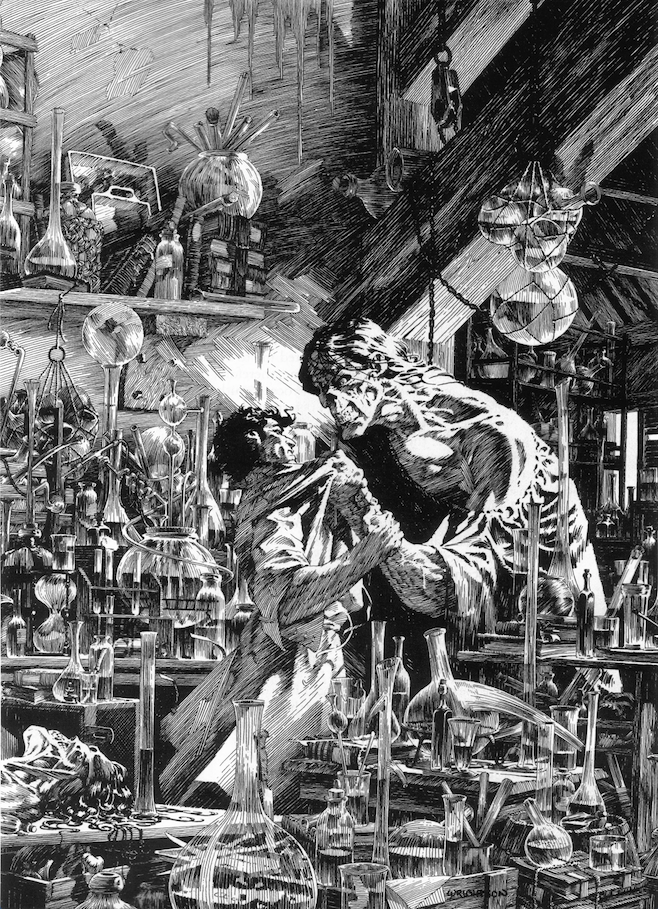
Berni Wrightson
—
2. Dracula (and vampires in general). Despite the fact that blood-sucking demons have existed for millennia in almost every culture, Dracula is the name most people associate with vampires. Dracula and vampires in general represent sexual awakening, forbidden lust, secret love, persistence, perseverance and obsession.
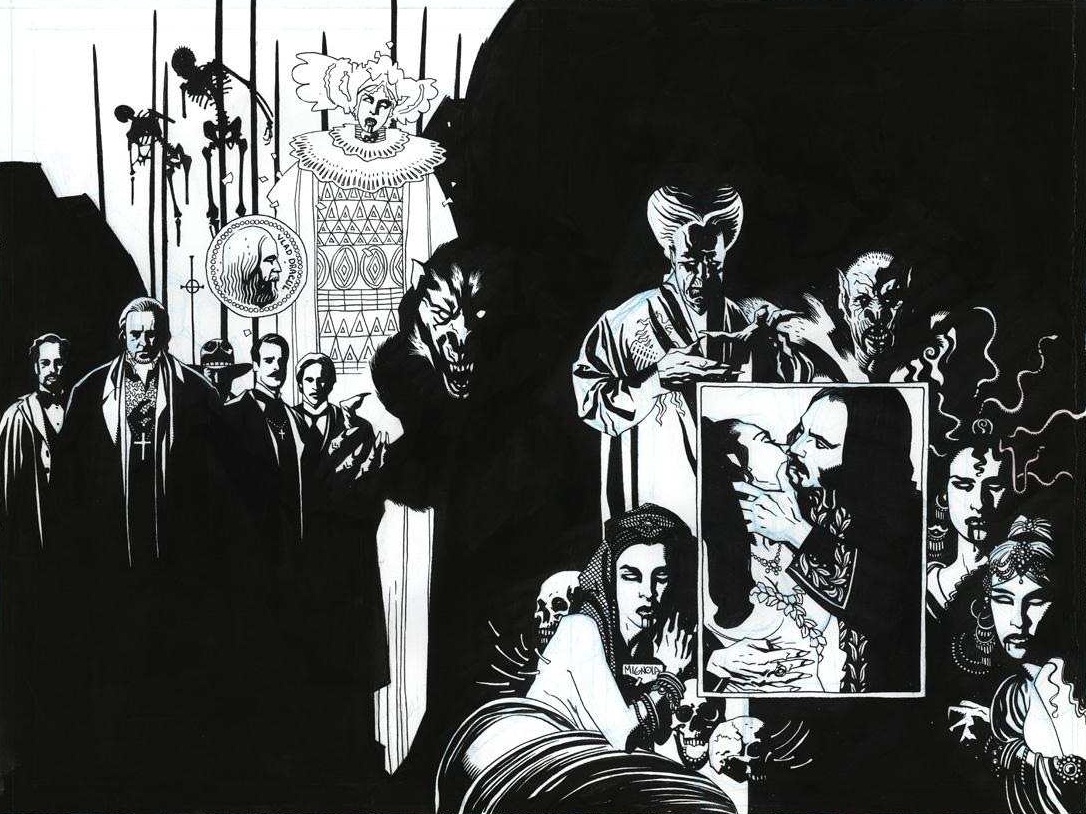
Mike Mignola
—
3. The Invisible Man. An existential sense of separateness and alienation, calls into question who we are in relation to others. If no one sees you, do you exist?
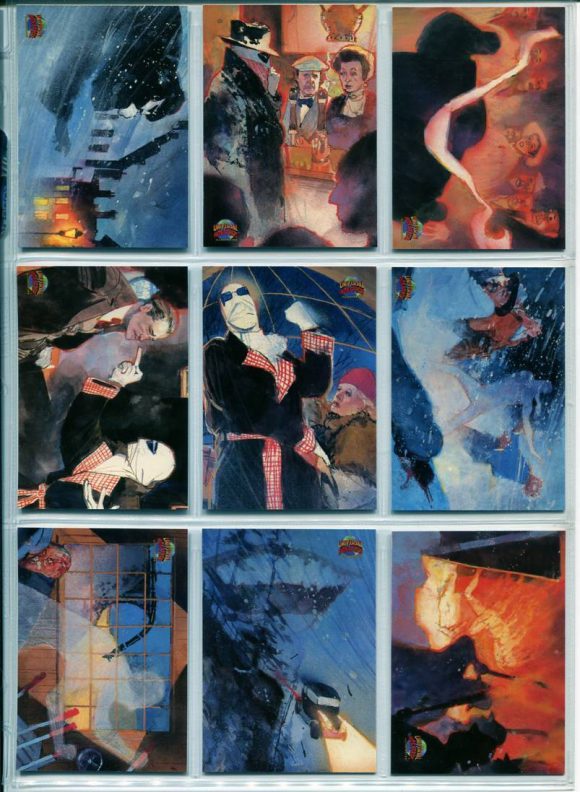
Bill Sienkiewicz
—
4. Zombies. Metaphor for the numbing and dumbing down of society, of compliance and submission. Zombies are a representation of the stagnation we find in our community and ourselves.
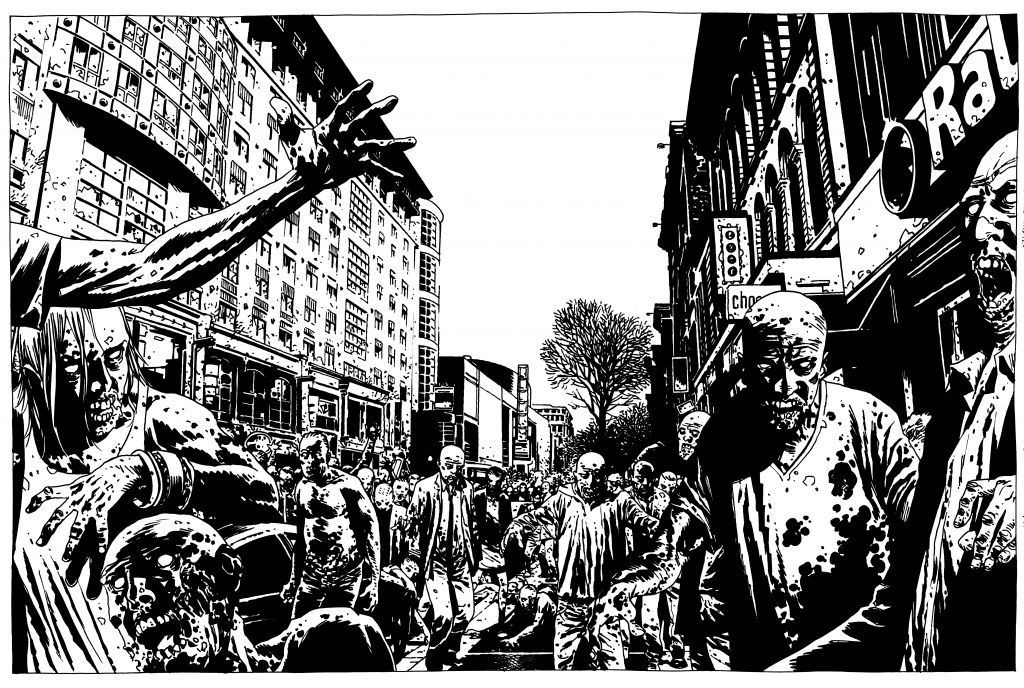
Charlie Adlard
—
5. The Boogeyman. A couple of thoughts: A) The Boogeyman, in all of its manifestations, embodies fear; our desire to be close to it, control it and master it. Being near something that scares us is both stimulating and addictive. B) A representation of guilt. The Boogeyman conjures up the ultimate picture of a judge, jury and executioner. Specifically punishing those with unpleasant thoughts, or acts (which is pretty much everyone). It’s the internal, punitive voice in our heads coming out to correct the wrongs by one means – death.
—
6. Wolfman. Looks at the taboo of expressing strong emotions – specifically anger, distress and the inability to self-regulate. What can happen when men release unbridled anger? Destruction and mayhem. A lot of characters that depict women’s anger choose revenge, grief or sex. There are exceptions: Raw, The Babadook and The Descent are a couple worth mentioning.
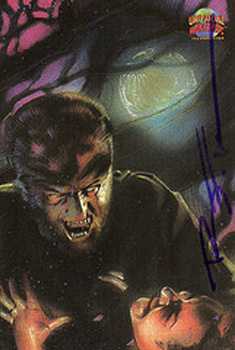
Brian Stelfreeze
—
7. Ghosts. Touch us on so many levels. They are sad reminders of our helplessness at being caught in two worlds and not knowing what to do or how to seek out assistance. They are also used as vehicles to scare, intimidate or question our sanity. Some ghosts are used as guides and act as catalysts for change. We identify with them because they were once us.
—
8. Aliens. A few thoughts: The concept of aliens tap into our creative, curious imaginative search for something outside of ourselves. They could be benevolent (ET), destructive (War Of The Worlds), lonely (Brother From Another Planet), hungry (Under the Skin), bored (Predator) or simply wanting to expand their species (Alien). We project our human qualities/foibles onto them because we want to connect but also control. Another aspect of our draw toward aliens is that they represent our xenophobic responses and fear of anything that is perceived as different or strange.
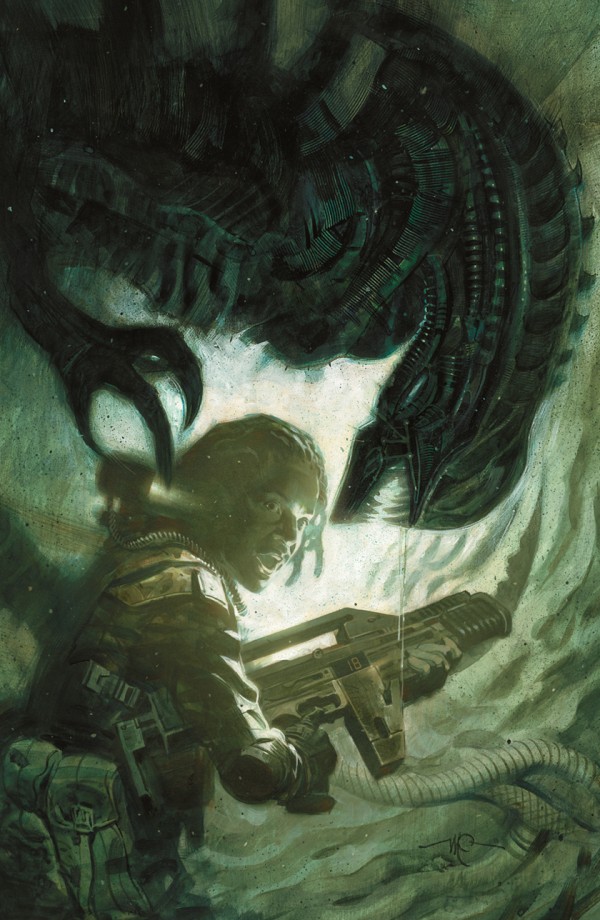
Tristan Jones
—
9. The Devil. The ultimate iconic figure depicting all that is hedonistic, wrong, bad, mischievous, deceptive, mean, angry and how easily we may fall into temptation. A concept that finds its way into our most primal and destructive tendencies — tendencies that must be kept at bay. The Devil also conjures up our fears of relationships and finding things out about your partner that were once well hidden. Superficially charming, mysterious and wanting to consume the very core of who you are may be a few qualities one may find familiar in the world of dating.
—
10. The Mummy. Our desire to control time, keep death, dying and decay at arm’s length and our obsession with living forever.
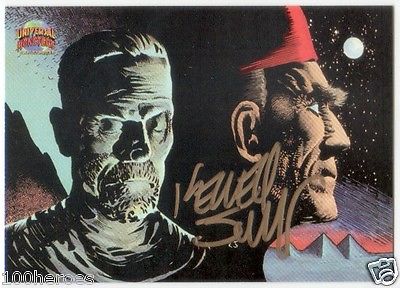
Kelley Jones
—
11. The Creature From the Black Lagoon. An evolutionary glitch leaves this poor guy alone and alienated in a time and place where no one is like him, everyone acts in anger toward him and his only tool for survival and self-preservation is to kill those who are after him. Loneliness, feelings of abandonment and fear of living in a place where no one will ever truly understand you are concepts we can all relate to at one time or another.
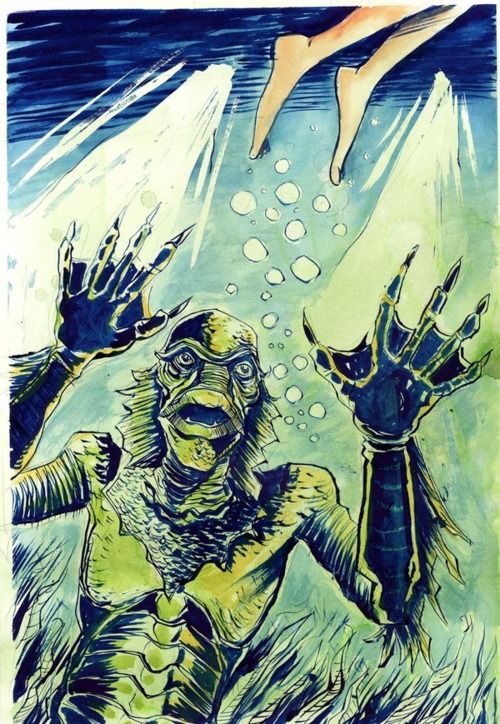
Jeff Lemire
—
12. When Nature Attacks! (Them, The Swarm, Night of the Lepus, Jaws, Willard, Squirm, The Prophecy, Long Weekend, Kingdom of the Spiders, Godzilla, King Kong, Frogs, Food of the Gods, Empire of the Ants, Day of the Triffids, Razorback and so much more.) This genre of movies tackles our disconnection from nature. This unnatural state, according to the philosopher Rousseau, leaves modern man/woman enslaved to their own base needs and gives rise to all sorts of societal ills — from domination and exploitation of others to poor self-esteem, depression and anxiety. Another aspect of importance regarding these movies has to do with exploring our guilt in relation to the ecological consequences of all the damaging things we are doing to our planet.
—
13. Robots. (Forbidden Planet, Stepford Wives, Surrogates, RoboCop, Star Wars, Terminator, Iron Giant, Pacific Rim, I Robot, Westworld, Demon Seed, Blade Runner, Ex Machina, Her, AI, Prometheus, Android, THX 1138, Cherry 2000, Hardware, Eva, 2001: A Space Odyssey, Metropolis and many more.) Creating machines in our image is something that we have wondered about, tinkered with and have found both fascinating and horrifying. Our inherent laziness gives rise to one type of domestic worker robot; our insecurities surrounding intimacy gives rise to the seductive — primarily female sexbot/ pleasure model (an exception may be Gigolo Joe in AI); our deep fear of technology surpassing us gives rise to the sentient computer that eventually learns that it doesn’t require humans anymore; and our refusal to acknowledge how war affects us and how we can remain immune to the suffering of others gives rise to the ultimate fighting soldier.


November 25, 2016
Fascinating! I relate to all of the monster archetypes (alienation, self destruction, ambivalence) and always wondered why. I’m especially scared and obsessed with zombies and “nature attacking.” It’s such a deep fear… almost feels like a festering wound. Thank you for explaining this in a psychological way. Comforting to know we all have archetypal wounds… that it’s a normal consequence of trying to exist on this planet! It’s almost abnormal NOT to be drawn to and fascinated by the monsters among us (real and imagined).
November 26, 2016
wonderful article
we hear so much about archetypes that are positive
but not so much negative or in popular culture.
I really enjoyed the article and look forward to more salient discussions of human nature and popular culture
December 2, 2016
Very Interesting